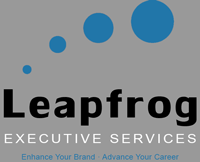Putting People on the Ledge
Category : 2018
The image is so Rockwellian and the setting so unique that many say the photo is faked. Wherever you fall on the authenticity spectrum, the carefully-staged picture of eleven construction workers eating lunch on an I-beam, 850 feet above Manhattan’s 41st street accomplished its purpose. Staged as a publicity event in 1932 during the final phase of constructing Rockefeller Center, a creative photographer found a way to shout to the world that Americans were dreaming, constructing, and most importantly-working.
Eighty years later, many workers from New York to Los Angeles feel like they are sitting on a beam-or at least a ledge, and they want off. We’re still dreaming and working. We’re still creating innovations in stone and code that create opportunity and generate economic growth. But as companies and HR organizations try to put the latest trends in corporate culture, workplace structure, and employee engagement into systems that aren’t ready for change, the result is, to borrow Seth Godin’s idea – a meatball sundae – combining two good things that don’t go together.
After multiple losses of valuable talent, a company found the courage to look at exit interviews and own what they saw. The leaders discovered and admitted, they were a top-down, autocratic organization run by a close-knit leadership team and couldn’t function any other way. Whatever business experts said they ought to be, they knew what they were-and they stopped ladling meatballs on their sundae of success in an effort to be what they weren’t.
As the open office concept gained steam, companies from Amazon to Zale have tried to make working at the office feel like working at Starbucks. For many businesses, an open office space filled with tables and intimate conference spaces is a perfect fit for the work people do. Forcing that design on a business that demands confidentiality and discretion puts people on a ledge of discomfort while they try to reconcile what they do with an environment they’ve been told will help them interact more with one another.
A July 2018 article by Dice cited research that found “face-to-face interactions decreased roughly 70 percent as the office opened up.” People generated 56 percent more email and received 20 percent more email. Workers sent 75 percent more words via messaging apps. Researchers found, “In boundaryless space, electronic interaction replaced F2F interaction.”
Consulting companies offer a plethora of change management initiatives and new ways to navigate the risks associated with major corporate shifts of any kind. Why? Because most change initiatives get initiated but don’t endure. Efforts to get people to act differently (the true measure of corporate culture) are not accompanied by the harder work of helping people think differently. The result is the same thing that happens at your local gym in January. The place is packed with people that were told in December to act differently, but don’t invest the needed time in learning to think differently. By March, reality prevails over intent, and the crowd at the gym gets back to its normal size.
This is not an advocation for stuffy, staid, and sclerosis-like environments. It is an encouragement to avoid creating unnecessary stress by ensuring any change in culture is, to borrow from design thinking-
- Desirable – There is the necessary human commitment to make it work.
- Viable – The business has the capacity to make it happen.
- Feasible – The company has the technical capability (internal resources) to be successful.
Putting people on a ledge makes great photography – but not always a great place to work.
